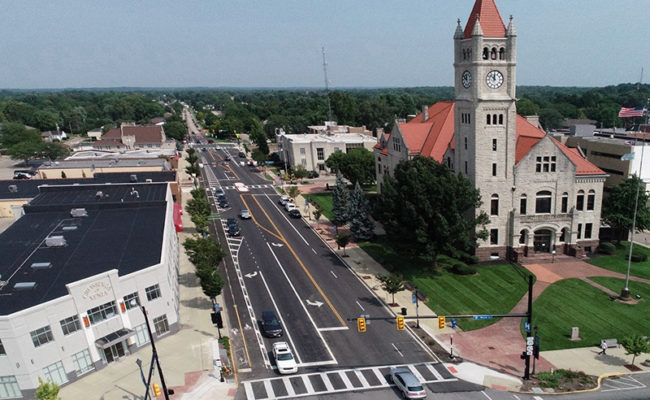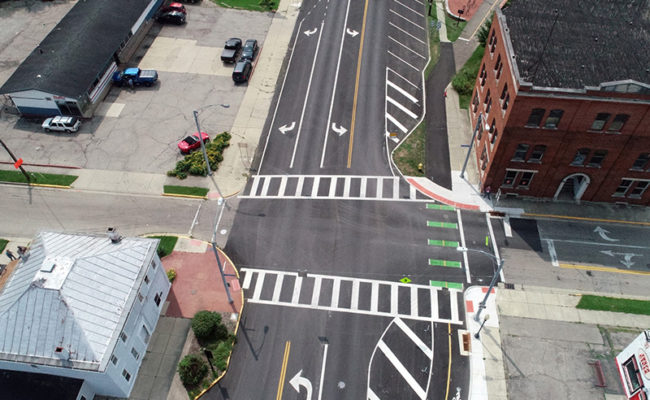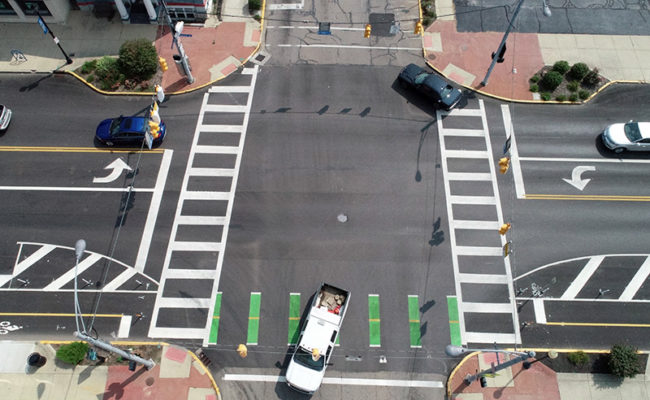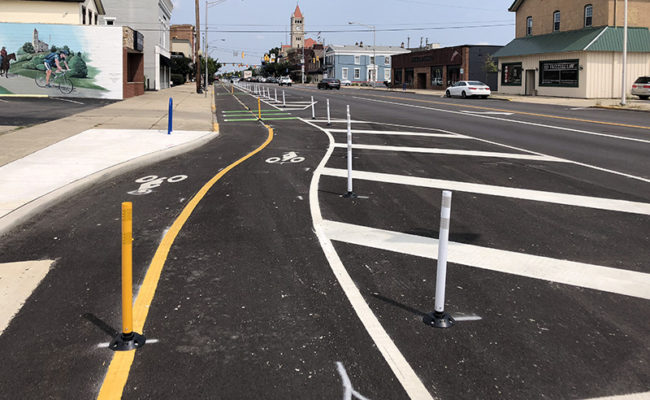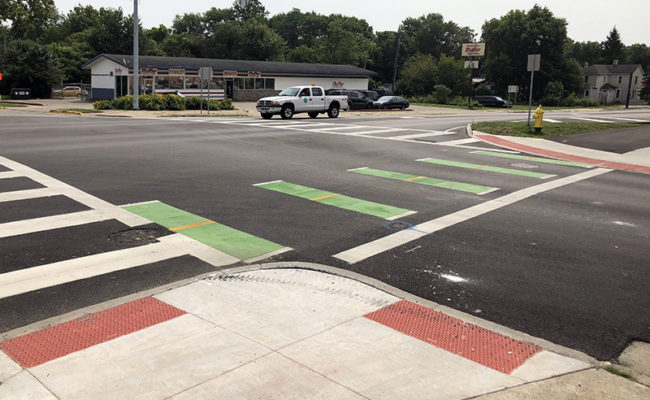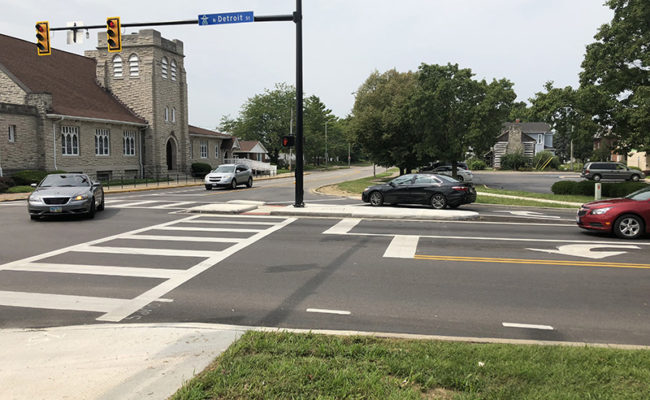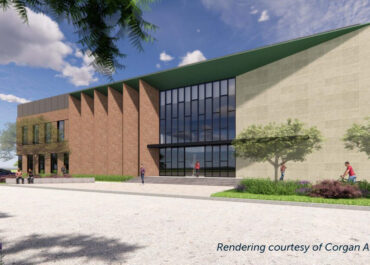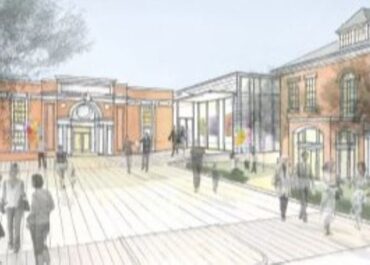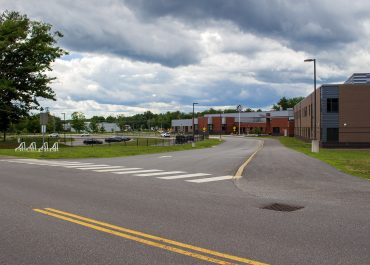The lack of dedicated bicycle infrastructure and way-finding signage for cyclists on Detroit Street created a break in an otherwise well-connected trail system.
LJB initially performed a traffic safety study of the corridor to evaluate existing safety performance and develop typical sections to enhance multimodal travel. As a result of the study, a road diet treatment was recommended and designed to address identified safety deficiencies and to create a more balanced and accessible facility for the various users of the roadway.
The new typical section reduced travel lanes to three-lane sections with through lanes and a center turn lane, and the remaining pavement width was used to provide dedicated bicycle lanes. Other features include reverse angle parking, pedestrian refuge islands and a pedestrian hybrid beacon (PHB).
